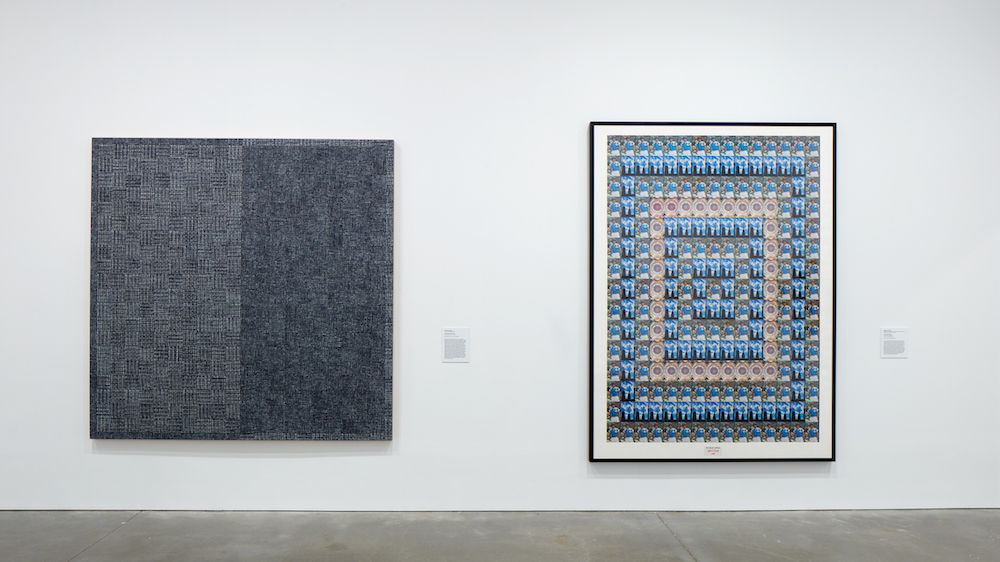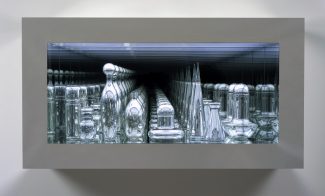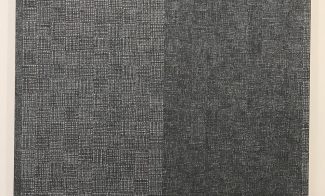It has always been interesting to me what we choose not to see. Perhaps this impulse to look away is a form of self-preservation, a strategy of survival when the reality of trying to keep going in our current political climate feels so bleak. As an able-bodied immigrant, a person of color, and a woman, I am sure I share this impulse with many others. And perhaps McArthur Binion, even as he rejects the imposition on Black artists to create art only about Black life, is thinking about this impulse, too. Through a compelling yet minimal use of line, form, and media, perhaps what Binion is really asking us to do is to see differently, to look harder at what we don’t want to see, and to accept that what we want to turn away from is still present, affecting our sightlines even when we try to hide from them.
What I learn from looking at Binion’s work is how to slow down looking itself. The tender details in his paintings and drawings reward our attentions, even as works like Route One: Box Two: V (2017), on view in Beyond Infinity: Contemporary Art after Kusama, still appear to hold something back from us. For a moment, I get the impression that something important remains beneath these repeated images of Binion’s Mississippi childhood home, just out of eyesight and boxed into tiny rows and columns beneath dense hand-applied oil stick paint.
I remember feeling this way the last time I was in Mississippi, driving down U.S. Route 49 between Sumner and Money, two towns at the heart of the story of Emmett Till’s lynching in 1955. Highway 49 is one of the most important roads in Mississippi. It’s a crucial site in Southern folklore and music; it’s a government-mandated evacuation route for climate emergencies; and it remains the only major artery between Mississippi’s Gulf Coast and the state capital. And it’s the last road that Emmett ever saw.
It’s hard not to think about what he saw traveling down that highway in August 1955. It’s even more astonishing to realize how little Route 49 has changed since then, too. Apart from a few areas of development, it’s quite literally the same road; very little has been paved over or rerouted. In general, the same few families own the same few parcels of land, and while new crops like soybeans have been introduced, it’s still cotton framing the views from the road, however much we want to look elsewhere instead.
In Route One: Box Two: V, Binion’s gridlines leaves us with small, slight gaps to catch our breath, to take a step back before returning close to the work once more. Without conflating this history with theme or subject matter, or requiring that we need to hold these ideas always in tense or tight relation to each other, Binion makes it clear that to hold ourselves back from looking closely is as much a misapprehension as to force ourselves to see only one way.
— Anni Pullagura joined the ICA as a Curatorial Assistant in 2020. She is completing a PhD in American Studies from Brown University.
Friday Art Notes are personal reflections on works of art shown or in the permanent collection of the ICA, written by ICA staff, volunteers, and supporters. Read more


